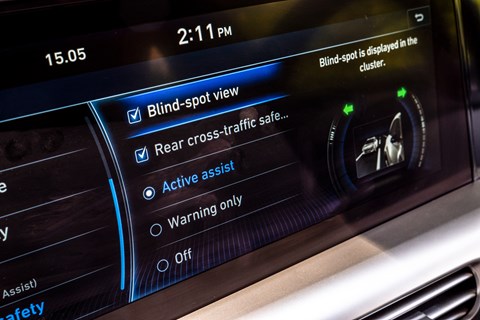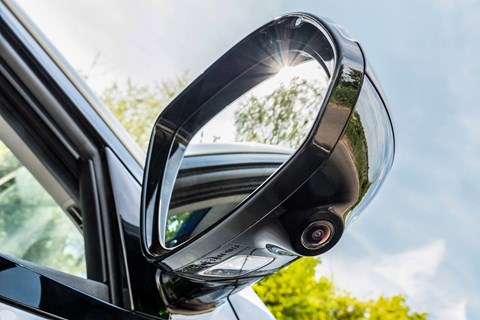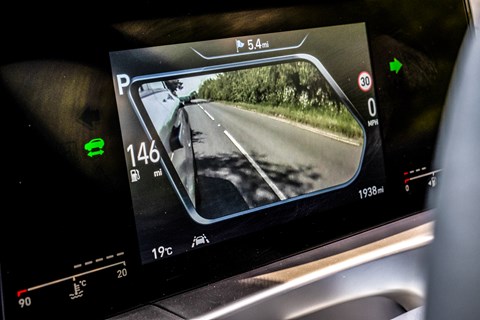► Testing Hyundai’s blindspot cams
► Active camera displays in instruments
► Only on the Nexo fuel-cell SUV for now
On a car as high-tech as the hydrogen-fuelled, (sort of) self-driving Hyundai NEXO, it’s easy to overlook its Blindspot View Monitor. It sounds like the blindspot monitors already fitted to many cars, but is in fact significantly more advanced. In fact, it may prove to be the real standout feature of the Nexo. And when it finds its way on to cars that run on fuel available from more than seven filling stations in the UK, it could be a significant life-saver.
For now, BVM is available on just the Nexo, which has it as standard, along with remote parking, forward collision-avoidance assistance and much more, including a two-screen dash that’s so big and clear it will make Mercedes sit up and take notice.
Regular blindspot monitoring uses sensors or cameras to detect vehicles to the side and rear of a car. Whether you’re being overtaken or you’re changing lane, it will warn you to have a good look and if necessary take evasive action. That warning generally takes the form of a blinking orange light in the door mirror.
BVM (which the Nexo has as well as a traditional blindspot warning system, not instead of) is much more ambitious. When you indicate, the instrument screen in front of you becomes a view of the relevant bit of road. So indicate left and it will show you the rear view down your left-hand side; indicate right and it shows the right-side view.
The wide-angle cameras, situated underneath the door mirrors, are also used for the NEXO’s 360º parking assistance tech.
It’s not like the virtual mirrors fitted on the Audi e-Tron Quattro, which replace mirrors with a screen on either side of the cabin. The Hyundai has conventional mirrors, with the screen only playing the camera feed when the indicators are in use.
Anyway, when put into practice, the system is a bit odd at first, with the instrument display completely changing the moment the indicator is flicked. But after a few attempts it becomes second nature. The camera feed isn’t exactly pin-sharp, but it’s lag-free.
The meagre supply of hydrogen filling opportunities means few will ever experience BVM in the Nexo. But it works so well that it will surely make sense to install in other Hyundais as they get fitted with the more screen-heavy interior that debuted in the Nexo.
Seeing backwards: how it works

Pre-departure check
BVM is one of a great many features in the active safety section of the settings menus. It can be switched off if you’d rather take your chances.

Eyes everywhere
Wide-angle lenses under the door mirrors sniff out the stuff lurking in the C-pillar shadows.

Signal, camera, manoeuvre
Live feed pops up when you flick the indicator. Resolution could be sharper but, crucially, there’s no delay.
Blindspot View Monitor: does it work?
Yes. Our test was in clear, dry conditions, which didn’t stretch BVM to its limits, but it delivered everything it was meant to. Like any new tech, it needs a mental shift from the driver. But we adapted very readily, and reckon it could be a boon on congested motorways.
Check out more Car Tech news here